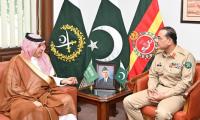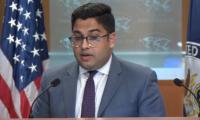Sadly, Afghanistan for a good part of its history has been at war with itself. Foreign powers have sometimes provoked these wars and sometimes joined them. The United States joined the battle twice, but is leaving now because these conflicts are beyond resolution by foreign powers – especially by military means.
While America has no doubt failed, one can argue that so has Afghanistan. And Pakistan, the country most affected by the problems within Afghanistan, has not covered itself with glory either. The end of Washington’s war will solve America’s problem; but Afghanistan and Pakistan will have to solve theirs on their own.
Three foundational issues have been at the heart of the Afghanistan problem: structure and the distribution of power; ethnic balance; and resistance to control and modernization. It has serious fault lines – ethnic, tribal, regional, sectarian, and ideological – and a rural-urban divide. Afghanistan is also exposed to competitive geopolitics and contested regional politics. Its conflict-prone internal make-up, which incites unending struggles for power and the risk of external intervention, only enhance the potential for instability.
There has been little attempt within Afghanistan to unify and set up functioning institutions of governance, a stable state structure, and rule of law. And so the country continues to be defined by corruption, militias, strong men, regional power-brokers and warlords. Writing in ‘Foreign Policy’, Stephen Walt says the Afghan security forces were “better equipped than the Taliban, and they received massive amounts of external military training, logistical support, sophisticated weaponry, and intelligence information. They were also backed up by thousands of US troops, armed drones, and extensive combat air support.” And they failed. Pakistan has not helped its own cause either with its Afghan policy over the years where it’s professed neutrality has largely been seen as Taliban friendly. The downside of this policy is now dawning on Pakistan. If any proof of Islamabad’s policy dilemmas is needed one only has to read reports of the briefing on Afghanistan given to parliament on July 1. Apparently the thrust of the briefing was that Afghanistan was headed for turbulent times due to the likely military campaign by the Taliban to form an emirate which Pakistan would not support.
Separately, Prime Minister Imran Khan has also been speaking or writing about Afghanistan. In an oped in the ‘Washington Post’ and a couple of interviews the prime minister expressed opposition to the Taliban’s return to power, specially by military means, and to his credit gave the clearest and most honest commitment yet by Pakistan to peace and stability in Afghanistan.
However, any clarity in the policy now may have come too late. National Security Adviser Moeed Yusuf in a briefing to the Senate Foreign Relations Committee on July 9 expressed concern over the worsening situation in Afghanistan terming it "extremely bad and out of Pakistan's control". One wonders why Pakistan could not anticipate this all these years.
The Taliban were certainly not a creation of Pakistan as a movement, but their evolution into a political force in the 90s did enjoy sympathy and support within Pakistan. And after 9/11 they strengthened themselves by establishing their credentials as a form of resistance against foreign occupation, and had a well-established presence in Afghanistan. There is a popular opinion also that many of their leaders and their families sought shelter in Pakistan so as to be shielded from American military might. To be fair, Pakistan did face a dilemma. The failing Afghanistan war had left it with no option but to plan for the future instability in Afghanistan where the Taliban may emerge as a major political force. Where Pakistan failed was to clearly see the Taliban strategy, and also the cost of its own strategy. Pakistan continued to see Afghanistan as a security challenge and through the prism of India-Afghan relations. It did not realize that Afghanistan that began unraveling after 1973 and continued to descend into instability due to the 80s war, and then the civil war that merged with America’s war was no longer predominantly a foreign policy challenge for Pakistan. It had become predominantly domestic and only partly a foreign policy problem.
Whatever the reasons, Pakistan’s previous policy saw the Taliban as an asset and they knew it. And for their part the Taliban saw Pakistan as an asset, having shrewdly sized up Pakistan’s predicament. They kept strengthening themselves and developing leverage against Pakistan through assets such as the Tehreek-e-Taliban Pakistan (TTP) and other cohorts within the extremist infrastructure of Pakistan which challenged Pakistan’s security forces and kept them away from the Taliban.
The TTP’s operation out of Afghanistan, ironically both with the help of India and possible connivance of the Afghan Taliban, soured relations between Afghanistan and Pakistan. All that made Islamabad shy of taking on the Afghan Taliban either for fear of losing an ally or creating an unmanageable security situation.
Pakistan miscalculated not only the Taliban strategy but the US policy also as President Trump with his 2020 Doha agreement with the Taliban pulled the plug on the Kabul government and Pakistan. The Doha agreement left behind a disappointed Kabul, a confused Islamabad and a resurgent Taliban too strong to opt for a negotiated solution.
The Taliban have decided on a military solution. And that will involve a protracted conflict with horrendous consequences for Pakistan. That prospect as well as the rising intransigence by the Taliban, Pakistan’s new emphasis on geo-economics, and Pakistan’s peace offensive in the region may have now convinced Islamabad that the Taliban’s return to power would be bad news. Taliban rule will have reverse strategic depth in Pakistan, inciting radicalization of sections of Pakistan’s society and affecting the country’s overall stability. And Afghanistan itself will also remain unstable, jeopardizing Islamabad’s ambitions for peace, connectivity and geo-economics.
The solution to the Taliban problem primarily lies within Afghanistan and in the relations between Afghanistan and Pakistan. Afghanistan and Pakistan have had a tortuous shared history that has left a complicated legacy of divided ethnicity across a disputed border. Each has responded by becoming friendly with the other’s enemies. Kabul should realize that if it wants Pakistan’s help it must seek friendly relations with Islamabad.
Pakistan could still salvage its Taliban policy by playing some peace-making role. It is good that Pakistan has been planning to host a conference on Afghanistan. But conferences do not solve complex and protracted conflicts. The nucleus of a peace deal has to be found within Afghanistan for which both Taliban and Kabul have to be pressured to have a serious dialogue. A similar dialogue will be necessary between Afghanistan and Pakistan.
Pakistan, the country most affected and having the most impact on Afghanistan, should be active in both the initiatives in collaboration with China and the US directly as well as in the context of the Extended Troika of US, China, Russia and Pakistan. There has to be a power-sharing deal in Afghanistan. Otherwise for Pakistan if the Taliban win, it is bad; if they lose, it may be even worse. There may still be time to save the situation. Gen Mark Milley, chair of the US Joint Chiefs of Staff, told reporters during a recent briefing at the Pentagon. “I don’t think the end game is yet written…A negative outcome, a Taliban automatic takeover, is not a foregone conclusion."
The writer, a former ambassador, is adjunct professor at Georgetown University and senior visiting research fellow at the National University of Singapore.
A woman walks past a building of the International Monetary Fund. — AFP/FileThe annual and spring meetings of the...
Late Benazir Bhutto's daughter Asifa Bhutto Zardari addresses the Christian community in Bihar Colony on January 23,...
Representational image. — PexelsWater is an important scarce natural resource that is required for several everyday...
Pakistani employees of online marketplace company Kaymu at work in Karachi. — AFP/FileThe true spirit of development...
India uses Afghanistan as a backstage area to carry out terrorist attacks against Pakistan
Another report by the Pakistan Institute of Peace Studies states that 78 per cent of attacks have been carried out by...







